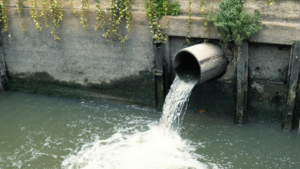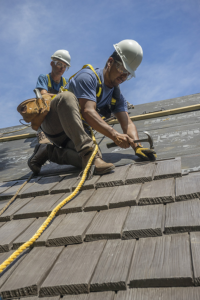There are several reasons to hire a professional tree removal service, such as Tree Removal Fayetteville NC. For example, a diseased or pest-ridden tree may be causing damage to your property or sidewalk and could be beyond saving.
Stumps left behind can be a trip-and-fall hazard and can interfere with mowing your yard. They can also attract carpenter ants and termites, so they should be removed immediately.

Many factors can influence the cost of tree removal. Some of these factors include the size and location of the tree, the type of wood, and the tree’s condition. In general, larger trees are more expensive to remove because they require a lot of labor and specialized equipment. The type of wood also influences the cost, as hardwoods like oak are more difficult to cut down than softwoods such as pine. The tree’s location can also affect the price, as trees close to buildings or power lines will often cost more to remove.
Another important factor that can impact the cost of tree removal is whether or not your homeowner’s insurance policy covers it. While it may be tempting to save money by removing a tree, it can be extremely dangerous and lead to expensive property damage. If you are considering cutting down a tree on your own, it is important to consult with an arborist first.
Stumps can be unsightly and detract from the look of your yard. Thankfully, there are several ways to get rid of them, including stump grinding, burning, and chemical treatments. Each method has its own pros and cons, but whichever one you choose, it is important to follow local fire regulations and ensure that the process is safe.
One of the most important reasons to consider tree removal is its impact on your personal safety. Old, unhealthy, and damaged trees pose a risk of falling branches or even collapsing entirely. This is especially true during severe storms and can cause extensive damage to structures and property. Removing these dangers proactively can help reduce property damage and prevent personal injury.
A reputable and experienced tree removal service will be able to handle the entire process safely and efficiently. In addition to removing the tree, they will also clear away any debris from the area. This will reduce your cleanup expenses and will keep your yard looking pristine. They will also be able to provide you with a detailed report of the services they have provided, so you can be confident in their work.
Safety
Tree removal is a complicated process, requiring specialized tools and equipment. It is also a dangerous task that can put people at risk of injury and property damage. It is therefore crucial to follow comprehensive safety measures during this process. This will ensure that the tree is removed properly without causing damage to surrounding structures or posing a threat to individuals in the area.
Safety measures include assessing the condition of the tree, securing the area around it, and determining the best felling trajectory for the tree. In addition, it is important to identify any objects in the tree’s fall path, such as power lines and fences. If these objects are not removed, they may be impacted by the falling tree and cause further damage. It is also advisable to keep away from trees that are showing signs of disease or structural instability.
Many homeowners choose to remove their trees due to safety concerns, such as a leaning or dead tree, or because they are located too close to a structure. Some of these issues can be addressed through pruning or trimming, but in some cases, the only option is to remove the entire tree. In addition, some people may want to remove a tree to improve the aesthetics of their home or yard.
A large tree can be a significant hazard to people and property, and it is often necessary to remove it in order to avoid damage during a storm. It is also a good idea to remove trees that have become too large for the space they are in, as they can be difficult to maintain and can pose a tripping hazard.
Another common reason for removing a tree is an infestation of pests or disease. While some of these diseases or pests can be cured, others are too serious to save the tree and will require its removal. In these situations, it is best to hire a professional service that can provide appropriate care for your trees.
Environment
Tree removal can affect the environment in many ways. From a safety standpoint, it can prevent property damage and personal injury by removing trees that pose a risk of falling branches or even collapsing completely. It can also help reduce fire hazards in areas prone to wildfires by creating defensible space around homes and structures.
Moreover, it can protect the surrounding ecosystem by removing diseased or pest-infested trees that may spread their pathogens or insects to healthy trees in the area. It can also improve the health of an overcrowded landscape by allowing other trees and plants access to sunlight and water.
Finally, it can also be necessary in urban or developing areas to make way for new construction projects, such as buildings or road expansions. As such, tree removal is often a vital part of responsible landscaping. However, homeowners should always consider the environmental implications of this decision before pursuing it. In addition, they should be sure to follow proper post-removal care to ensure the ecological balance is maintained. Otherwise, the negative impact of a tree removal can be irreversible and costly for the local community.
Insurance
When hiring a tree removal company, homeowners should always ask to see proof of insurance before signing any contracts. This can help ensure that the contractor has workers’ compensation and general liability insurance in case a worker gets injured on the job. Many reputable companies are happy to provide this proof, and it’s worth checking before making a final decision.
Homeowners insurance typically covers the cost of removing trees that damage insured structures such as a home or fence. However, it doesn’t usually cover the costs of removing healthy trees that pose no immediate threat to an insured structure. In some cases, an insurance policy may only pay up to $500 for each tree that is removed. This is why it’s important to weigh the costs of removing a tree against the amount of your home insurance deductible.
In some situations, the homeowner’s insurance of a neighbor may be responsible for covering the cost of removing a tree. This can happen if the tree falls on a shared property line, or if it blocks access to a driveway or wheelchair ramp. However, if the tree was uprooted due to negligence or poor maintenance, such as not addressing known disease, decay or instability, the neighbor’s insurance may not cover the cost of removing it.
For arborists and tree removal businesses, a commercial general liability (CGL) insurance policy is crucial. This type of insurance protects businesses from third-party claims for bodily injury and property damage resulting from the business’ operations. It can also cover the legal costs associated with defending such claims. Without a comprehensive CGL policy, a single lawsuit could devastate a tree service company.
Another important insurance policy for tree removal companies is commercial auto coverage. This protects any vehicles the business uses for work, including cars and trucks. It can also include coverage for employees who use their personal cars or trucks to perform work. It’s a good idea to purchase this coverage for any vehicle used by the business, and it’s often required by mortgage lenders.
Finally, a commercial property insurance policy protects the tree removal company’s buildings, tools, inventory and equipment. It can also include business interruption coverage, which helps cover the lost income from being unable to operate the company while repairs are made. This is an essential insurance policy for any tree removal business, and it’s important to shop around for the best prices and terms.







